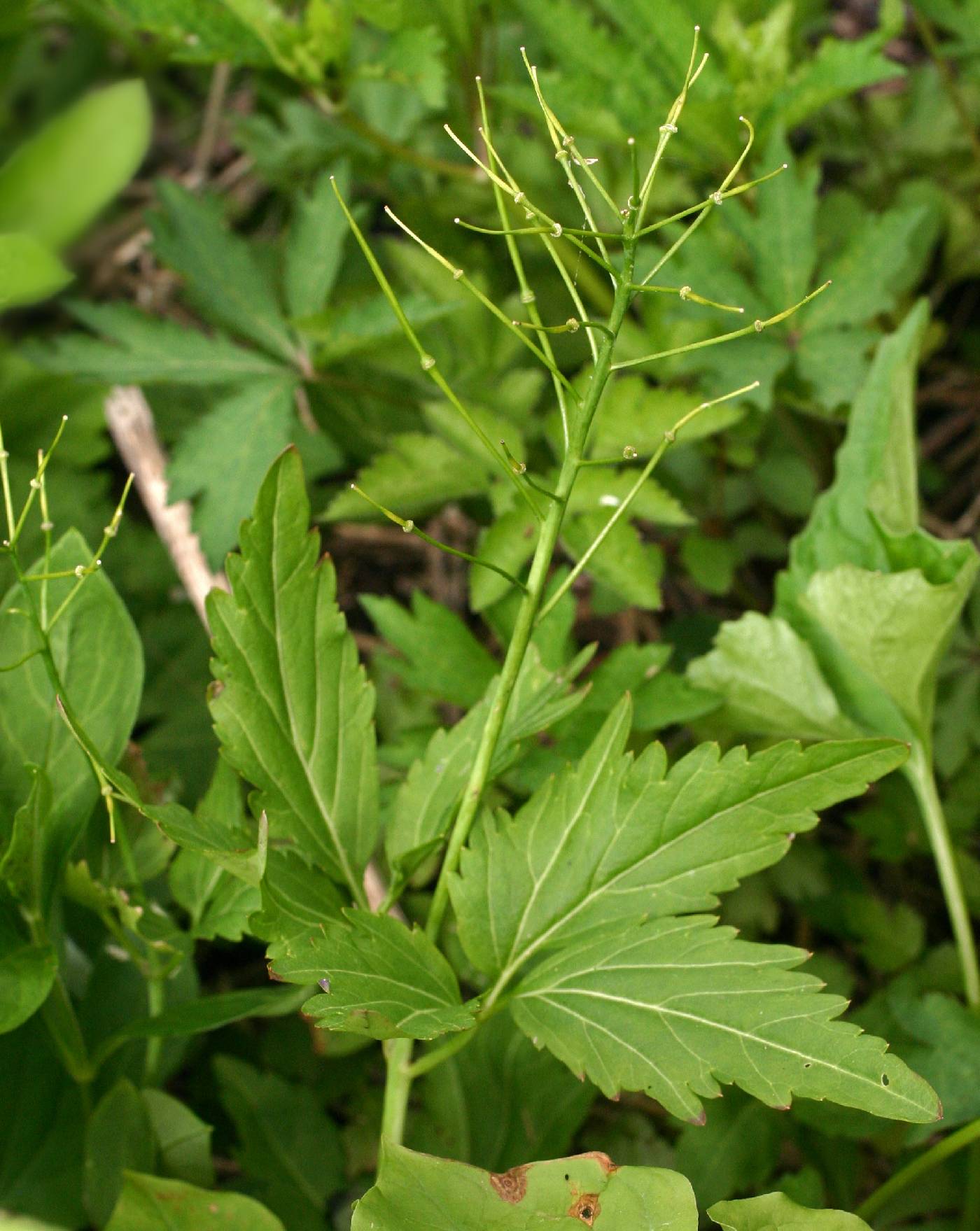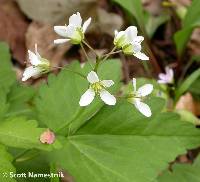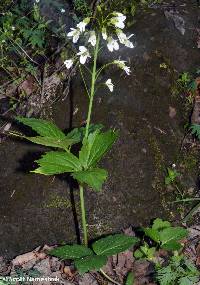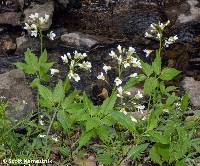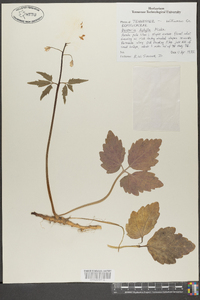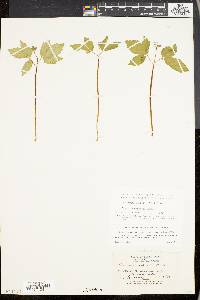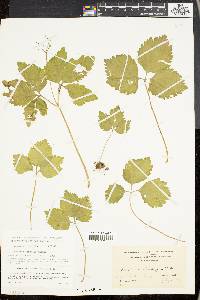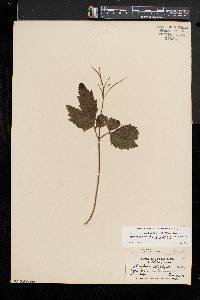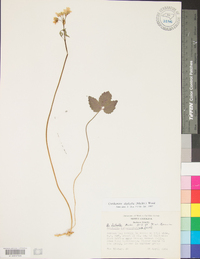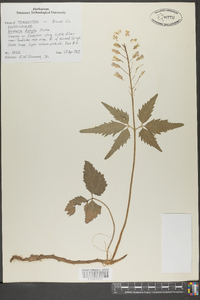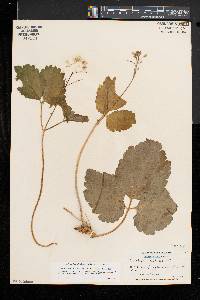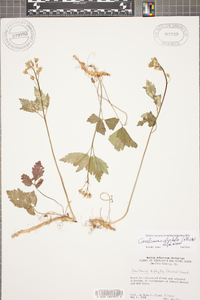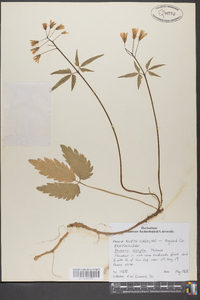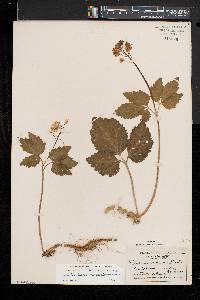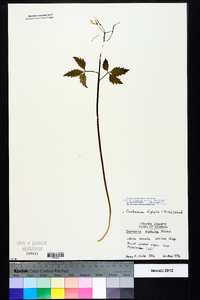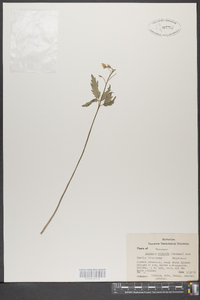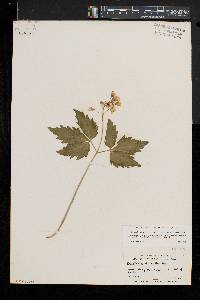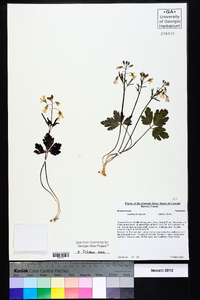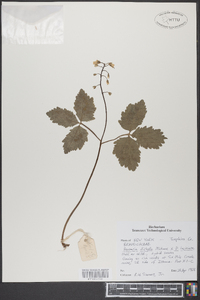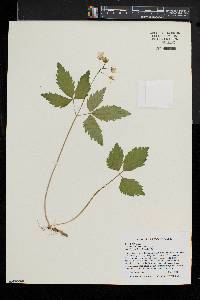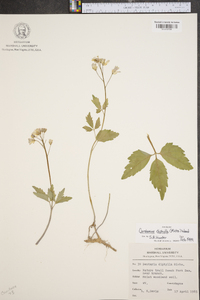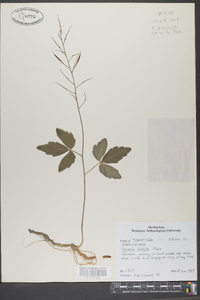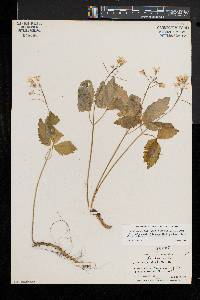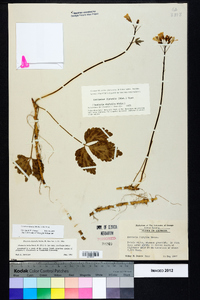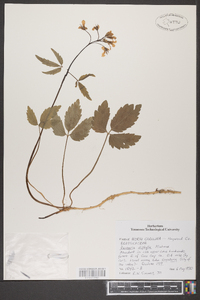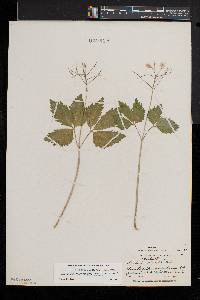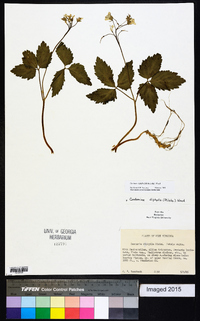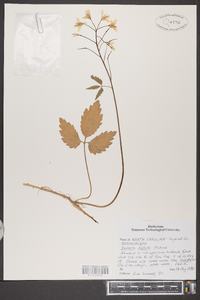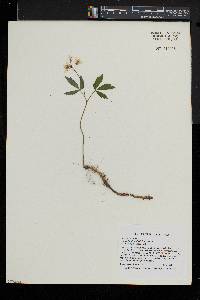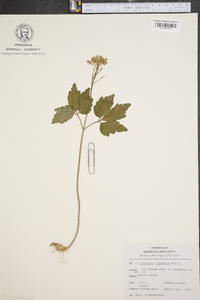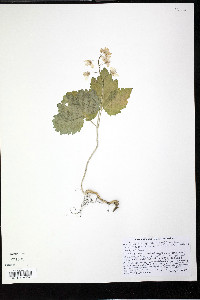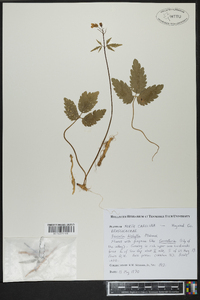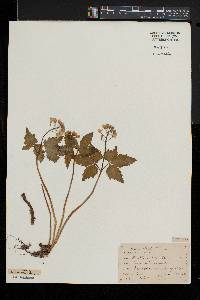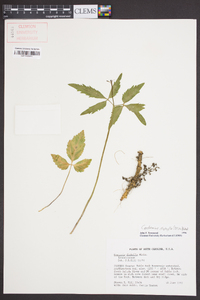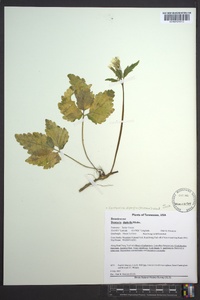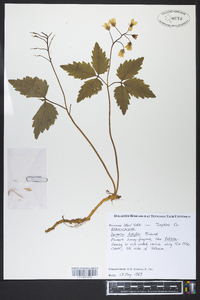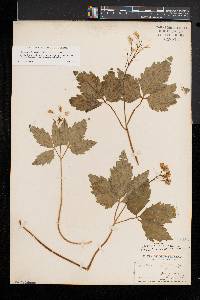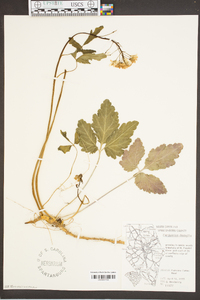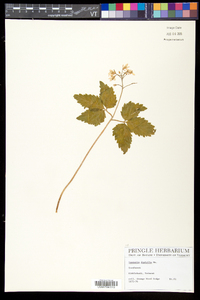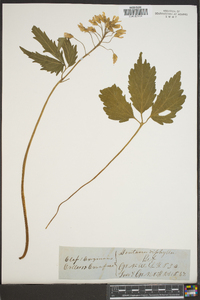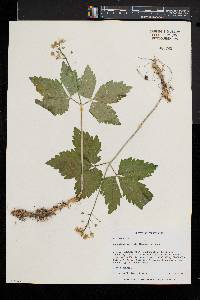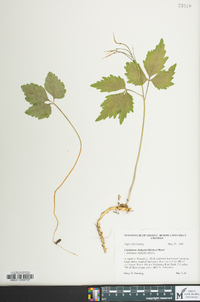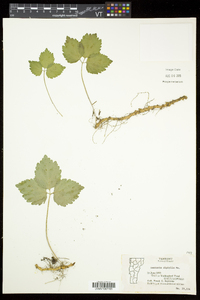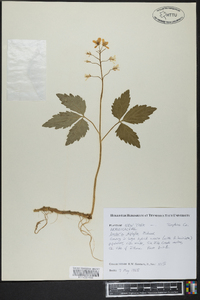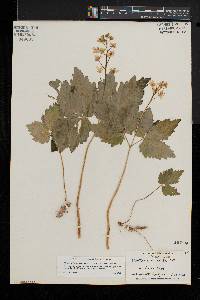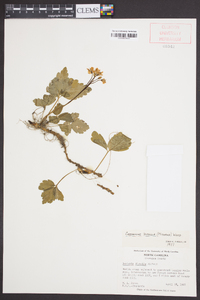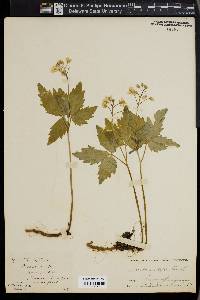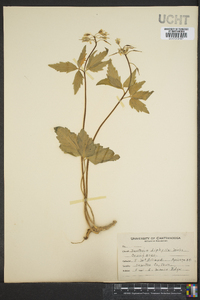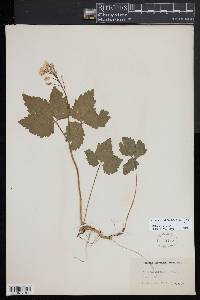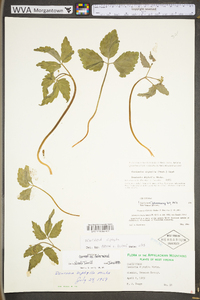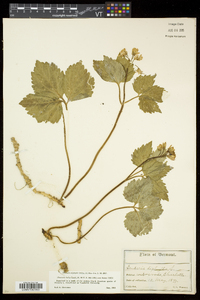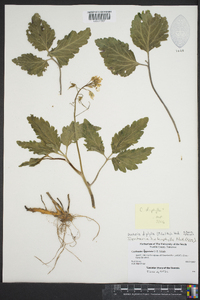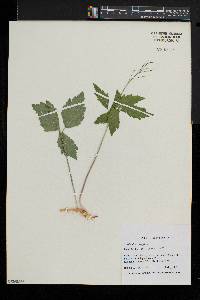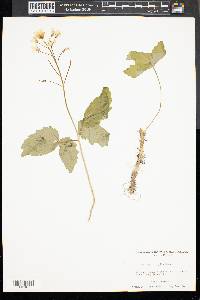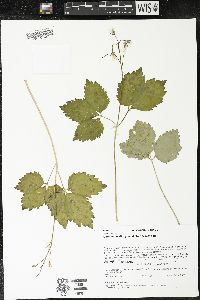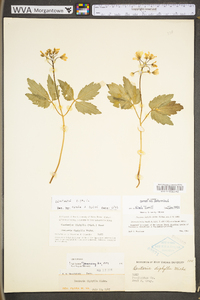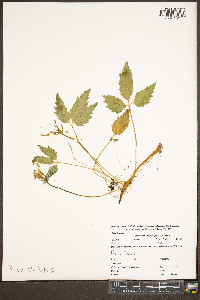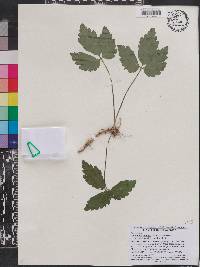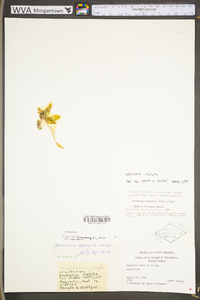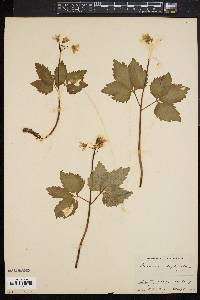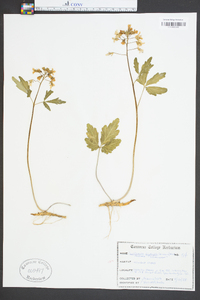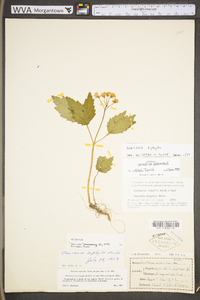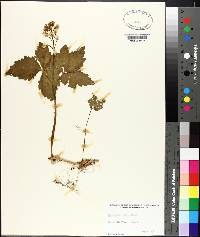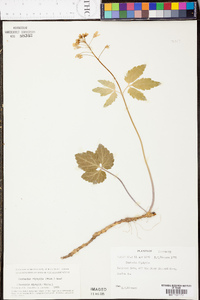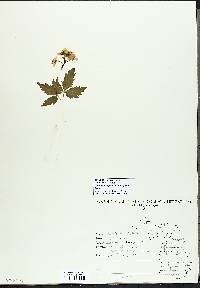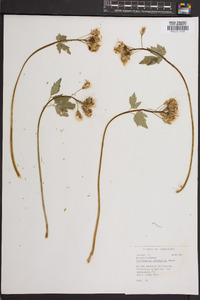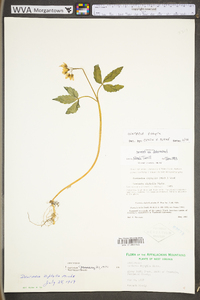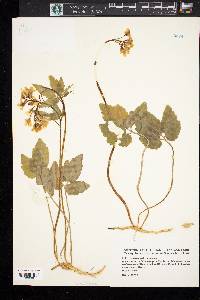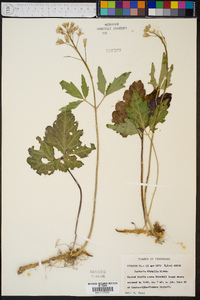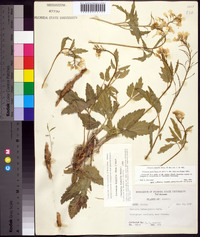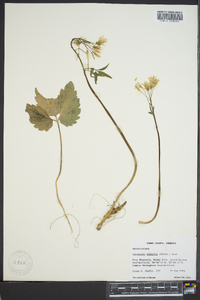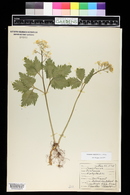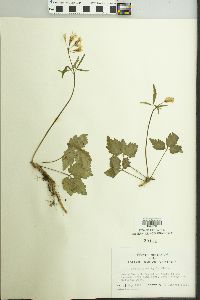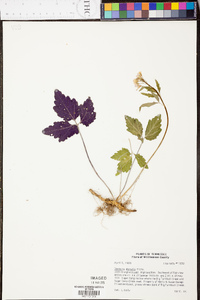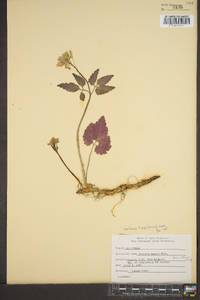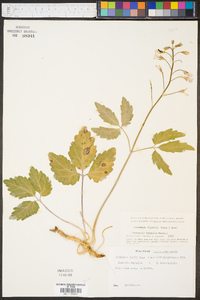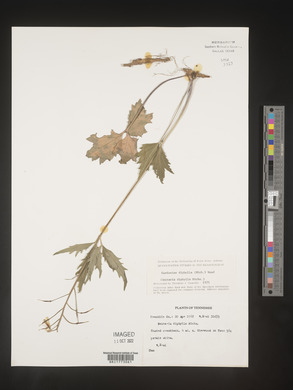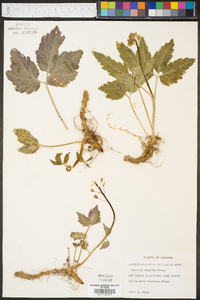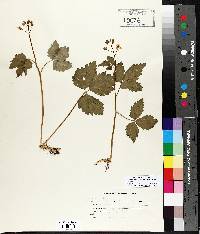
|
|
|
|
Family: Brassicaceae
Crinkleroot
[Dentaria diphylla Michx., moreDentaria incisa Eames] |
Perennials; usually glabrous, rarely sparsely pubescent. Rhizomes (unsegmented), cylindrical, 2-10 mm diam., (somewhat uniform, fleshy, not fragile, with dentate leaf scars). Stems erect, unbranched, (1.2-)1.5-3.5(-4) dm, rarely sparsely pubescent distally. Rhizomal leaves 3-foliolate, (5.5-)8-22(-26) cm, leaflets petiolulate or subsessile; petiole (3-)4.5-16(-20) cm; lateral leaflets subsessile or petiolulate, blade often similar to terminal, base sometimes oblique; terminal leaflet (petiolule 0.5-1.2 cm), blade ovate-elliptic to broadly ovate, (2-) 3.5-8(-10) cm × (5-)20-65(-80) mm, base cuneate to obtuse, margins coarsely crenate or dentate, (surfaces puberulent, trichomes to 0.1 mm). Cauline leaves 2 (or 3) [(sub)opposite], 3-foliolate, (similar to rhizomal leaves), petiolate, leaflets petiolulate or subsessile; petiole (1-)2-4.5 cm, base not auriculate; lateral leaflets similar to terminal; terminal leaflet subsessile or petiolulate (0.2-1 cm), blade broadly elliptic to ovate, (2-)4-8(-10) cm × 10-50 mm, margins coarsely dentate or crenate, (margins minutely puberulent). Racemes ebracteate. Fruiting pedicels ascending to divaricate, (10-)15-30 (-36) mm. Flowers: sepals oblong, (4-)5-8 × 2-3 mm, lateral pair slightly saccate basally; petals white or pink to purple, obovate to oblanceolate, (7-)9-15(-17) × (3-)4-7 mm, (short-clawed, apex rounded); filaments: median pairs 5-8 mm, lateral pair 3.5-6 mm; anthers linear to oblong, 2.5-3 mm. Fruits linear-lanceolate, 1.5-4 cm × 1.5-2.5 mm; ovules 10-14 per ovary; style 4-8(-10) mm. Seeds (rarely produced) brown, oblong, 2-2.2 × 1.2-1.5 mm (cotyledons incumbent). 2n = 96. Flowering Apr-Jun. Wooded bottoms and ravines, cliffs, bluffs, ledges, shaded slopes, meadows, moist fields, alluvial banks, rich woods; 50-1300 m; N.B., N.S., Ont., Que.; Ala., Ark., Conn., Ga., Ill., Ind., Ky., Maine, Mass., Mich., Minn., N.H., N.J., N.Y., N.C., Ohio, Pa., S.C., Tenn., Vt., Va., W.Va., Wis. Perennial herb 20 - 40 cm tall Stem: upright. Flowers: in a loose, branched cluster, long-stalked, white, often tinged dull purple, 1 - 2 cm long. Sepals four, 5 - 8 mm long. Petals four, much longer than sepals. Stamens six. Fruit: a narrow pod, upright, ascending, 2 - 4 cm long, cylindrical. Rhizome: thick, continuous (not jointed or narrowing). Basal leaves: similar to stem leaves but with longer leafstalks. Stem leaves: usually two, opposite or nearly so, short-stalked. Leaflets three, twice as long as wide, coarsely toothed. Terminal leaflets diamond- egg-shaped. Lateral leaflets obliquely egg-shaped. Similar species: The similar Cardamine concatenate differs by having three whorled leaves and leaf segments that are narrowly oblong to lance-shaped. Flowering: May Habitat and ecology: Uncommon in the Chicago Region. Has been found growing in mesic woods and calcareous springy ground in Berrien County, Michigan. Was also found along a roadside in Kane County, Illinois. Occurence in the Chicago region: native Etymology: Cardamine comes from the Greek word kardamon, which refers to plants in the cress family. Diphylla is Latin for "two-leaved." Author: The Morton Arboretum Rhizome continuous; stem glabrous, 2-4 dm; cauline lvs commonly 2, opposite or nearly so; lfls 3, coarsely crenate-toothed, half as wide as long, the terminal rhombic-ovate, the lateral obliquely ovate, obtuse to rounded at base on the broad outer side; basal lvs similar to the cauline; hairs of the lf-margins appressed, very short, ca 0.1 mm; sep 5-8 mm; pet 11-17 mm, dull purplish; frs 2-4 cm; 2n=96. Rich woods; Que. and N.B. to Minn., s. to N.C., Ga., and Ala. Apr., May. (Dentaria d.; D. incisa, a form with narrower, laciniately toothed lfls.) Gleason, Henry A. & Cronquist, Arthur J. 1991. Manual of vascular plants of northeastern United States and adjacent Canada. lxxv + 910 pp. ©The New York Botanical Garden. All rights reserved. Used by permission. From Flora of Indiana (1940) by Charles C. Deam This species has a very restricted range and is local in the state. Where it is found, it often forms large colonies. My Steuben County plant was found in the A. E. Emerson woods about 6 miles southwest of Angola. This colony was very dense, about 3 x 6 feet, and located in very moist and sandy soil on a low, alluvial flat along a small creek. The Ohio County plants were also found in large colonies on the moist slope of Laughery Creek. ...... Indiana Coefficient of Conservatism: C = 8 Wetland Indicator Status: FACU |
This project was made possible in part by the Institute of Museum and Library Services [MG-70-19-0057-19].
Powered by Symbiota

